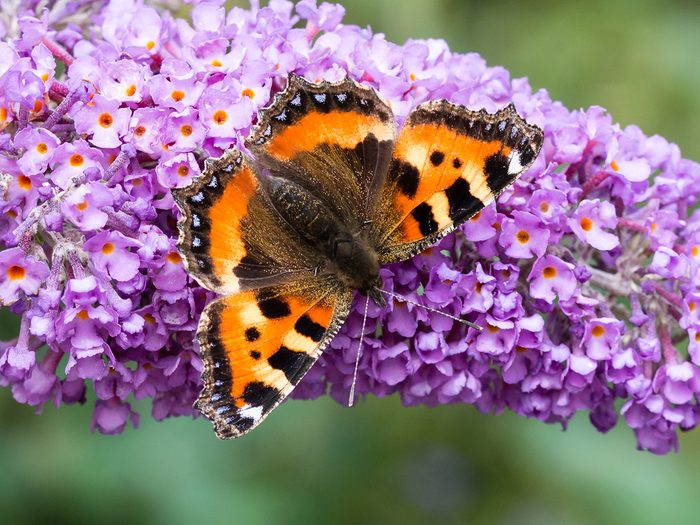
Plants That Attract Butterflies and Birds
Butterfly Bush (Buddleia)
When it comes to plants that attract butterflies and birds, you can’t go wrong with buddleia—commonly known as “butterfly bush.” It’s similar to a later-flowering lilac, with sprays of sweetly scented flowers in jewel tones of red, purple, rose, white, or even soft yellow. Plant this bloom in full sun with some protection from strong winds, to attract butterflies and hummingbirds.
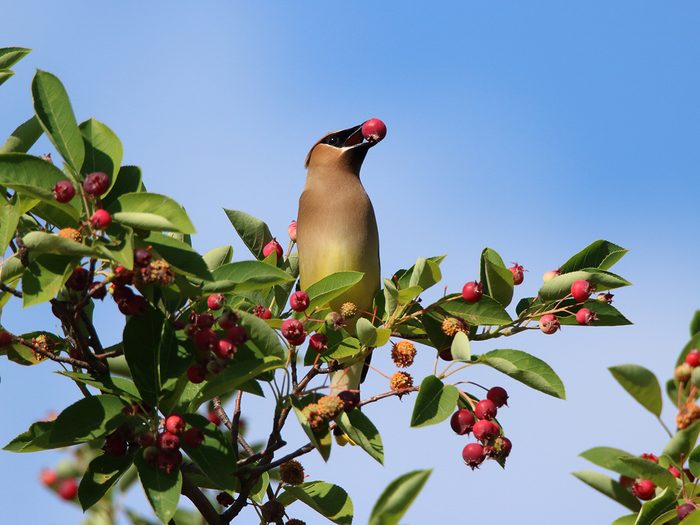
Serviceberry (Amelanchier)
Whether you refer to this small tree or large shrub as shadbush, chuckly-pear, serviceberry, or any of a number of other common names, it’s an excellent and very hardy native species that’s great for attracting butterflies and birds. Serviceberry flowers early in the spring, providing nectar for early-hatching butterflies; the flowers develop into sweet, deep blue, pea-sized berries that birds will strip from the branches.
Don’t miss this gorgeous gallery of Canadian bird photography.
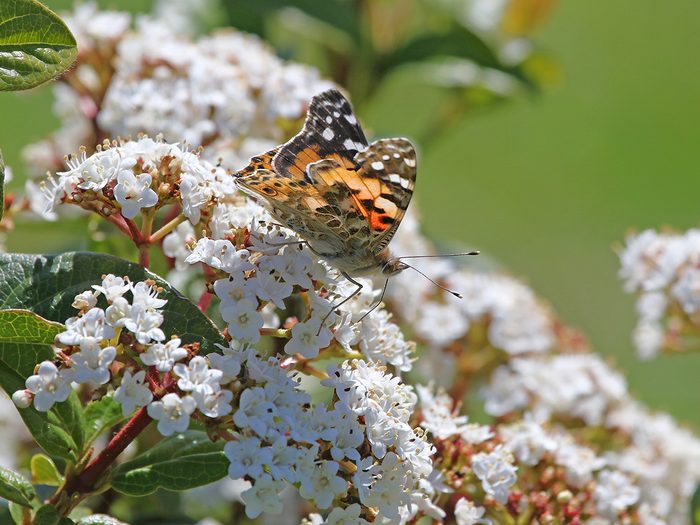
Viburnums (Viburnum, numerous varieties and species)
There is a viburnum (or two or six) for every garden. Many of the earlier blooming hybrids such as ‘Dawn’ and ‘Juddii’ have highly fragrant flowers that attract butterflies. Others, like the native ‘highbush cranberry’ (V. trilobum) and ‘witherod’ (V. nudum), produce fruit that lasts well into winter, providing food for birds during the harshest of seasons. Plant viburnums in organic-rich soil with good drainage. Choose a spot that gets full sun for best results.
These genius gardening tips will save you time, money and effort.
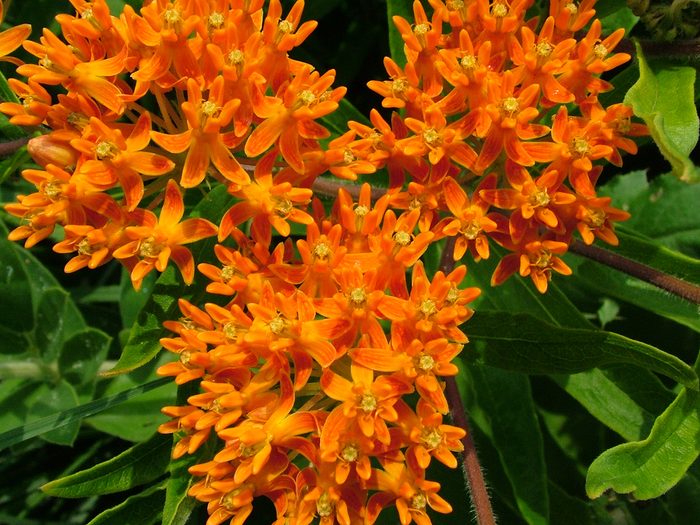
Milkweeds, Butterfly Weeds (Asclepias)
If you want monarch butterflies in your garden, you must have milkweed. The larval (caterpillar) stage of the monarch eats milkweed leaves, stems and flowers, which actually make both larva and adults unpalatable to birds and other predatory creatures. Perhaps the most popular milkweed for gardeners is butterfly flower (Asclepias tuberose) which sports flowers in shades of red, orange or brilliant yellow.
These beautiful butterfly pictures will take your breath away.
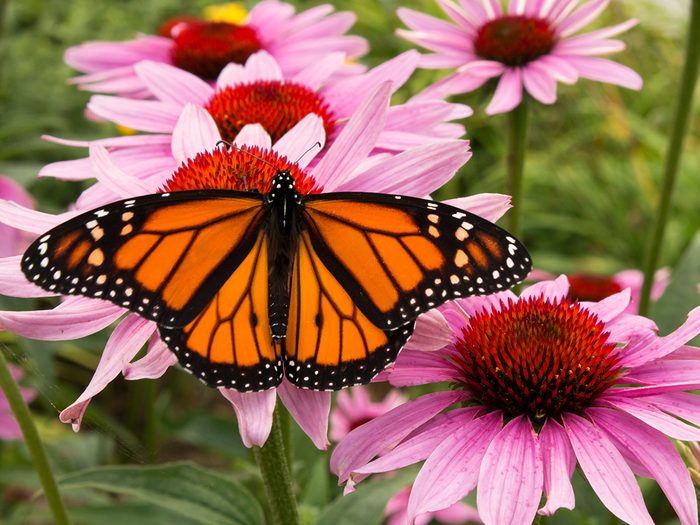
Coneflowers (Echinacea)
One of the most attractive of garden perennials, coneflowers have a long bloom period, grow well even in dry seasons, and flourish in anything from sun to partial shade. They are available in a gamut of shades beyond the traditional white or purple, including orange, yellow, gold and green. Butterflies love to sip nectar from the flowers, while seed heads from the spent flowers provide food for many songbirds.
Find out how to boost your home’s curb appeal (without breaking the bank).
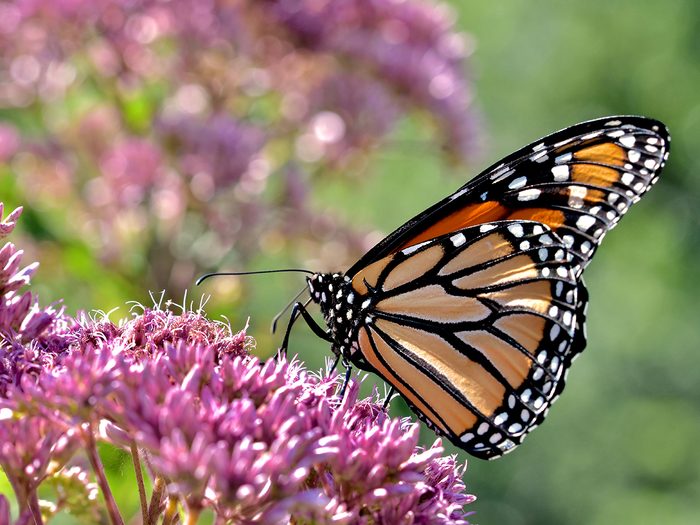
Joe-Pye Plant, Boneset (Eupatorium)
This striking native perennial works especially well if you have a damp area in your garden. You also need room to grow Joe-Pye plant, as the native species can grow up to five feet tall. The flat-topped heads of white or rose-pink flowers attract numerous nectar-seeking butterflies from midsummer until early fall. Leave the flower heads in place after blooming, and they’ll also provide food sources for songbirds.
Strapped for space? Here’s expert advice on how to grow an urban garden.
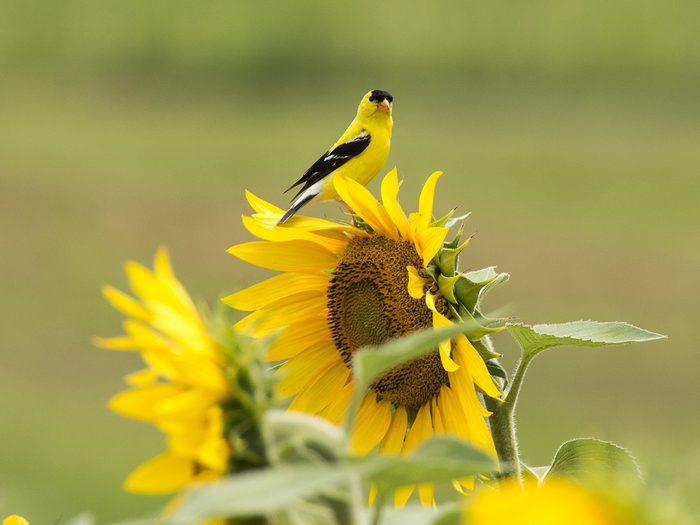
Sunflowers (Helianthus)
Sometimes plants that attract butterflies and birds provide nourishment for humans, too! The good news about sunflowers is that there are numerous varieties available that have more compact growth habits, making them suitable for small gardens or even for larger containers. Sunflower seeds are high in oil content, making them an excellent source of food for countless seed-eating bird species.
This striking gallery of sunflower photography will brighten your day.
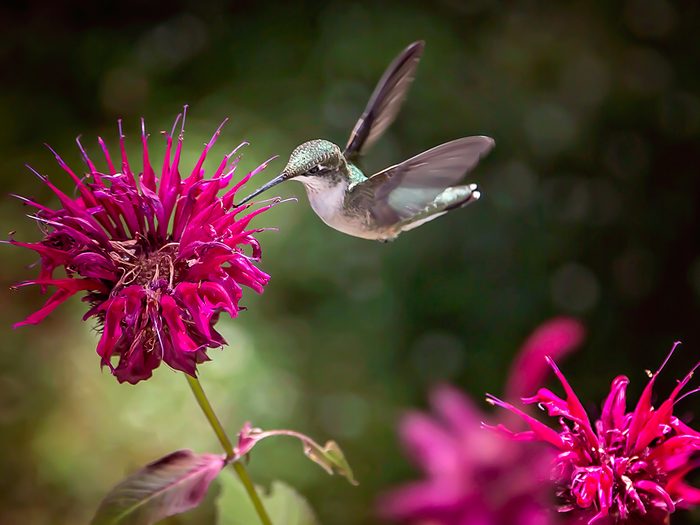
Bee Balm (Monarda)
Not just a balm for bees, this plant attracts birds and butterflies, too! Hummingbirds in particular love this highly fragrant relative of mint and lavender. Give bee balm room to grow, because it will spread out into large clumps, boasting brilliant red, magenta, purple, or pink flowers. When the blossoms are spent, usually in early-mid autumn, smaller songbirds will flock to enjoy the seeds that form in the flower heads.
Find out more flowers that are sure to attract hummingbirds.
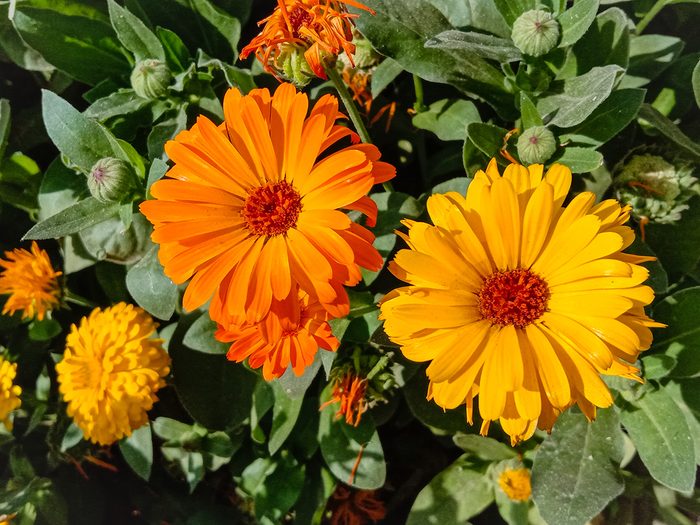
Calendula, Pot Marigold
This easy-to-grow annual often reseeds itself, but is never hard to control. Its daisy-like flowers in shades of cream, yellow, orange and gold are great nectar providers for butterflies, while songbirds enjoy the seed heads. Calendula works well in conditions ranging from sun to partial shade, and will keep flowering as long as you remove spent blooms. Stop deadheading your calendula by early autumn so that you’ll have a good supply of seed heads for your bird visitors when frosts arrive.
A major bonus? Calendula is one of the best mosquito repellent plants you can grow.
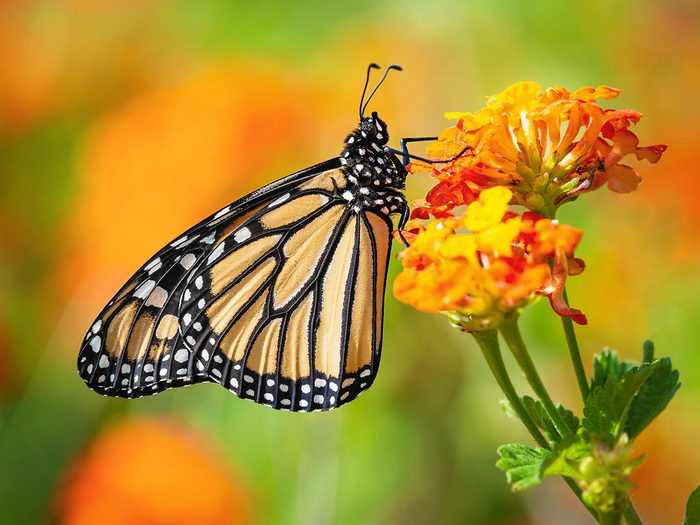
Lantana
This flowering annual is a wonderful addition to window boxes, hanging baskets or other containers, attracting numerous types of butterflies. The flower heads are composed of numerous small florets, and many varieties have several different colours in each flower. Deadhead lantana to keep it flowering until autumn frosts.
Next, find out the best annual flowers for container gardening.